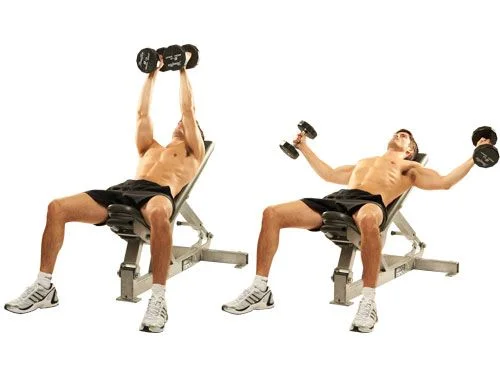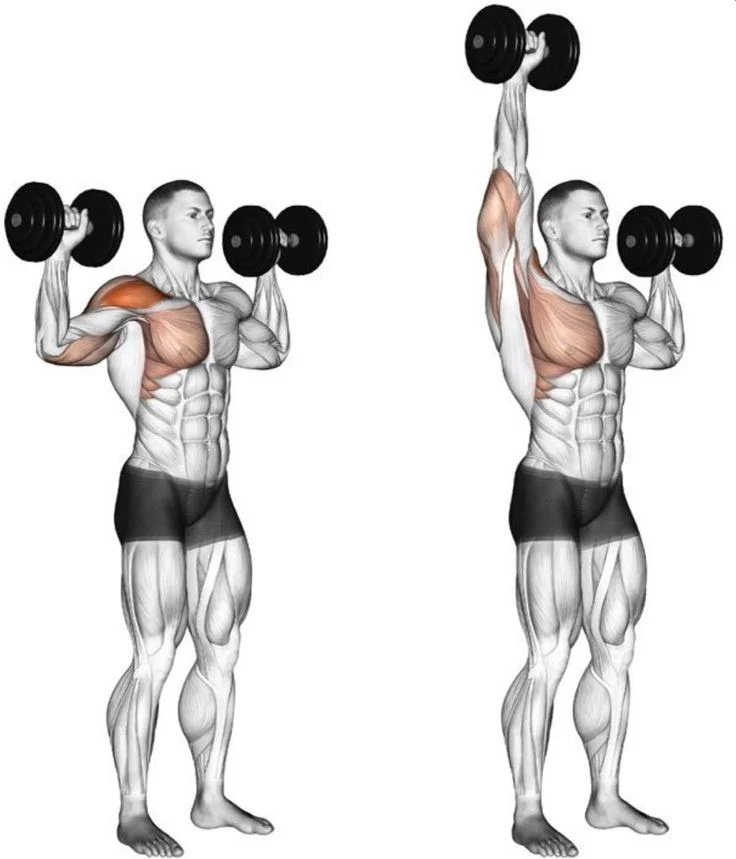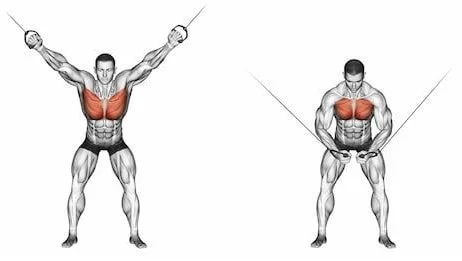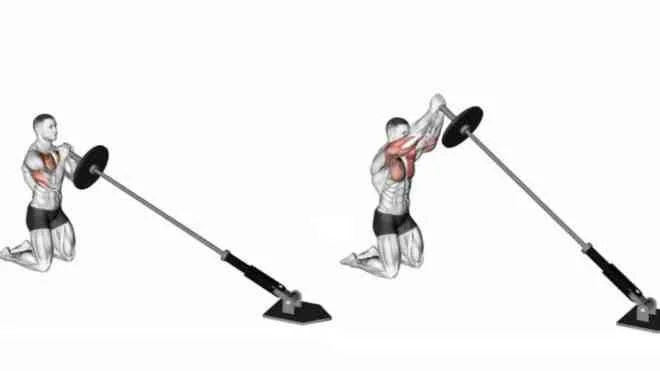Looking to build massive, impressive upper chest muscles? Look no further than this comprehensive Upper Chest Workout Guide 2024! This guide will outline the best exercises for targeting your chest, as well as provide advice on how to progress and maximize results.
Benefits of Upper Chest Workout
Engaging in a targeted upper chest workout offers a range of benefits, contributing not only to aesthetic improvements but also to overall functional strength and well-being. Here are some key advantages:
- Balanced Chest Development:
- Focusing on the upper chest helps create a well-proportioned and balanced chest appearance. This contributes to an aesthetically pleasing physique.
- Defined Clavicle and Chest Lines:
- Strengthening the upper chest enhances the definition of the clavicle and chest lines, creating a more sculpted and athletic upper body.
- Improved Posture:
- A developed upper chest supports good posture by helping to stabilize the shoulders and upper back. This can reduce the likelihood of slouching and associated posture issues.
- Enhanced Functional Strength:
- The upper chest is involved in various daily activities and sports that require shoulder movement and strength. A targeted workout improves functional strength for tasks such as pushing and lifting.
- Prevention of Muscle Imbalances:
- Focusing solely on the lower chest can lead to muscle imbalances. Incorporating upper chest exercises ensures a comprehensive approach, reducing the risk of uneven development.
- Increased Range of Motion:
- Exercises that target the upper chest, especially those involving an incline, promote a broader range of motion. This can enhance flexibility and joint mobility in the shoulder area.
- Injury Prevention:
- Strengthening the muscles around the shoulder girdle, including the upper chest, can help prevent injuries by providing stability to the shoulder joint.
- Boosted Metabolism:
- Engaging in resistance training, including upper chest exercises, contributes to muscle growth. Increased muscle mass boosts metabolism, aiding in weight management and overall fitness.
- Versatility in Training:
- A well-rounded chest workout includes both upper and lower chest exercises. This versatility ensures a diverse training routine that targets all aspects of chest development.
- Psychological Benefits:
- Achieving progress in upper chest workouts can boost confidence and provide a sense of accomplishment. This psychological benefit can positively impact overall well-being.
- Aesthetic V-Taper:
- A developed upper chest contributes to the V-taper appearance, enhancing the visual appeal of the upper body by creating a broader and more athletic silhouette.
Incorporating upper chest exercises into a well-structured workout routine offers a holistic approach to chest development, promoting both physical and aesthetic benefits. As with any fitness regimen, it’s essential to prioritize proper form, gradually increase intensity, and allow for sufficient recovery to maximize the advantages of an upper chest workout.
upper chest muscle Anatomy
- Pectoralis Majo
- Pectoralis Minor
- Serratus Anterior
upper chest exercises
Incline Barbell Bench Press

Muscles Targeted: Upper chest, anterior deltoids, triceps.
Benefits: Emphasizes the clavicular head of the pectoralis major, promoting upper chest development.
Setup:
- Set an adjustable bench to an incline of around 15 to 30 degrees.
- Lie on the bench with your back flat and feet planted firmly on the floor.
- Grip the barbell slightly wider than shoulder-width apart.
Execution:
- Unrack the barbell and lower it to the upper part of your chest, keeping your elbows at a 90-degree angle.
- Press the barbell back up to the starting position, fully extending your arms.
- Control the descent and ascent, engaging your upper chest throughout the movement.
Incline Dumbbell Flyes

Muscles Targeted: Upper chest, anterior deltoids.
Benefits: Provides a deep stretch and contraction in the upper chest, enhancing muscle engagement.
Setup:
- Use an incline bench set to a comfortable angle.
- Hold a dumbbell in each hand with palms facing each other.
Execution:
- Start with the dumbbells directly above your chest, arms extended.
- Lower the dumbbells outward in a wide arc, feeling a stretch in your chest.
- Bring the dumbbells back up to the starting position, focusing on the contraction in your upper chest.
Low to High Pulley Cable Fly

Muscles Targeted: Upper chest, serratus anterior.
Benefits: Allows constant tension on the upper chest, emphasizing muscle contraction.
Setup:
- Set the cable machine pulleys to the highest position.
- Attach D-handles to the cables.
Execution:
- Stand in the center, holding one handle in each hand.
- Step forward with one foot, maintaining a slight bend in your elbows.
- Pull your hands downward and across your body, squeezing your upper chest.
- Return to the starting position with controlled movements.
Decline Push-Ups

Muscles Targeted: Upper chest, triceps, anterior deltoids.
Benefits: Engages the upper chest with the added challenge of a decline position. Requires no equipment.
Setup:
- Assume a plank position with your feet elevated on a stable surface.
Execution:
- Lower your chest toward the ground, keeping your body in a straight line.
- Push back up to the starting position, engaging your upper chest and shoulders.
- Maintain a controlled pace throughout the exercise.
Smith Machine Incline Press

Muscles Targeted: Upper chest, anterior deltoids, triceps.
Benefits: Provides stability with a guided bar path, ensuring controlled upper chest activation.
How to do:
- Set the Smith machine bench to a 15-30 degree incline.
- Lie on your back beneath the bar and grip it slightly wider than shoulder-width apart.
- Lower the bar to your upper chest and push it back up to the starting position.
Overhead Dumbbell Shoulder Press

Muscles Targeted: Upper chest, anterior deltoids, triceps.
Benefits: Engages the upper chest and shoulders, promoting overall upper body strength.
How to do:
- Sit or stand with a dumbbell in each hand at shoulder height.
- Press the dumbbells overhead, extending your arms fully.
- Lower the dumbbells back to shoulder height, maintaining control.
High-to-Low Cable Crossover

Muscles Targeted: Upper chest, serratus anterior.
Benefits: Targets the upper chest from a different angle, enhancing muscle definition.
How to do:
- Set the cable pulleys to the highest position.
- Stand with one foot forward, holding one handle in each hand.
- Bring your hands down and together in a sweeping motion, targeting the upper chest.
- Return to the starting position with control.
Landmine kneeling squeeze press

Landmine kneeling squeeze press
Muscles Targeted: Upper chest, Front shoulder, Triceps.
Benefits: Targets the upper chest and improves shoulder stability, aiding in engaging stabilizer muscles due to the kneeling position.
How to do:
- Set up the landmine as described above.
- Kneel in front of the landmine, ensuring your body is in a stable position.
- Hold a weight or weights together in front of your chest.
- Perform a pressing motion, pushing the weights upward while maintaining the squeeze between them.
Tips for Effective Upper Chest Training:
- Warm up adequately before starting your workout.
- Focus on controlled movements and a full range of motion.
- Adjust the weight based on your fitness level, ensuring a challenging but manageable workload.
- Maintain proper form throughout each exercise to target the upper chest effectively.
- Include a mix of these exercises in your routine to ensure comprehensive upper chest development.
Remember to consult with a fitness professional or healthcare provider before starting a new workout program, especially if you have pre-existing medical conditions or concerns.
Upper Chest Workout
| Provides stability, and targets the upper chest. | Benefits | Sets x Reps | Notes/Tips |
|---|---|---|---|
| Incline Barbell Bench Press | Targets upper chest, promotes strength. | 4 x 8-10 | Adjust pulleys for high position, and maintain control. |
| Incline Dumbbell Flyes | Use a moderate incline, and keep controlled movements. | 3 x 12-15 | Full range of motion, focus on the chest contraction. |
| Cable Crossover (High Pulley) | Isolates the upper chest, and enhances muscle growth. | 3 x 12-15 | Elevate feet for the challenge, and maintain a straight body line. |
| Decline Push-Ups | Adjust the cable to chest level, and focus on shoulder retraction. | 3 x AMRAP | Engages upper chest, and requires minimal equipment. |
| Smith Machine Incline Press | Provides stability, and targets the upper chest. | 3 x 10-12 | Maintain a neutral spine and control weights. |
| Overhead Dumbbell Shoulder Press | Targets upper chest and shoulders. | 3 x 10-12 | Ensure natural bar path and control movement. |
| High-to-Low Cable Crossover | Targets upper chest, improves range of motion. | 3 x 12-15 | Adjust the cable to chest level, focus on shoulder retraction. |
| Face Pulls | Initiate the movement with the upper chest, control cables. | 3 x 15-20 | Adjust the cable to chest level, and focus on shoulder retraction. |
Notes:
- Warm up before starting the workout.
- Choose weights that challenge you with proper form.
- Rest for 60-90 seconds between sets for muscle recovery.
- Adjust sets and reps based on your fitness level and goals.
- Incorporate this workout 1-2 times per week, with at least 48 hours of rest between sessions.
As always, it’s advisable to consult with a fitness professional or healthcare provider before starting any new workout program, especially if you have pre-existing medical conditions or concerns.





